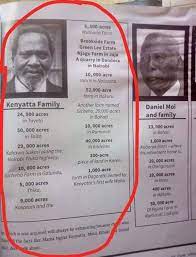What is its Origin?
In the remember-able history of Babukusu, Khuswala kumusee/ Esimbo was first performed by Mwambu after the funeral of Samba Sambarani Ngunyi when Babukusu first lived in Situluku. Omukananachi Luka Namulala from the house of Omutukwiika Musamali, the son of Maina wa Nalukale, Wachilonga Omubichachi, Saenyi Omubulo and Wabule wa Machakhi, Omubuulo are notable performers.
Up until recently, this task of public preaching/comforting was done by John Wanyonyi Manguliechi, a dedicated Omumeme clansman uncled at Ebubuya. Born in 1930 in Kamusinga village and circumcised under Bakinyikewi in 1946, Manguliechi would find the company of Simoni Masakha who trained him through the three vital stages of khuswala; performing while seated (5 years) , standing (3 years) and finally while walking. After being a full performer in 1976, Manguliechi became known all over bukusu-land until he breathed his last in July 2012 and rested with his forefathers.
What is khuswala Kumusee anyway?
This is a unique, strong and direct calling by Wele Khakaba not only to be a custodian of Bukusu history but to condemn, guide, teach and comfort people in public places. It is a unique art that requires specific type of kumusambwa, inherited magico-religious power to be a performer. The performer, called oswala kumuse, an elderly man of strong moral standing who he is mentored to take up this task.
Conditions for Oswala Kumuse:
i. One cannot perform kumuse if his first born child is a girl and also if his father is alive or he will be killed in the act.
ii. His father or his father’s age-mates should not find him performing, he will die.
iii. He should not be Omubini- a night runner
iv. He should not be Omwifwi- a thief
v. He should not be Omulosi –a witch
vi. He should not be we bichubo- one who easy to curse
vii. He should not be we chinge- a mean person
viii. He should not be waria embalu – one who failed to endure circumcision pain
ix. He should not be Omwana wa Nasikoko – a child born of a woman married before.
x. He should not be omukhwana – a twin
What Instruments/regalia does Oswala Kumuse need?
i. Ekutusi- Colobus Monkey Skin
ii. Lichabe- elder’s robe
iii. Kumukufu - chain of ostrich egg-shells, put on if deceased is a twin
iv. Garb – ekutwa
v. Endebe embukusu – Bukusu traditional 3-legged stool
vi. Esimbo – a rod (that led Babukusu from Situluku to Sibakala- like synonymous to the Biblical rod that Moses used in Red Sea crossing)
Which clans produces Baswala Kumuse?
i. Batukwiika (only Bakitang`a and Baluleti),
ii. Babuulo,
iii. Bayiitu,
iv. Bachemayi
v. Babuya (all sub-clans- Bakabo, Bawoolo, Basikulu, Bauucha, Baumbwa, and Bakhufwe)
vi. Bameme,
vii. Bamusomi,
viii. Bachemwile,
ix. Babichachi and
x. Bakhwami among few others.
Any imposer from the non-performing clan who puts on the ritual garb and tries to perform will drop dead in the arena and die on the spot!
What the Oswala Kumuse Orator does
- The ritual takes place three days after burial
- Mourners get seated ahead of his arrival, forming an open circle –women & children on one side, men on the other.
- The widow(s) and orphaned children sit on the side of women on the ground with their legs stretched out in front of them in line with khulungisia lisaye.
- The orator comes from the North, preparing a path (kumuse about 8m long) from south to north, on which he walks as he speaks.
- The Kumuse path signify the road to the afterlife that the deceased will follow.
- No one should ever cross this part, reason why the ritual is conducted far off the compound.
- He speaks in styled, articulated words, asking questions, most of which are rhetorical.
- Audience only participates at needed intervals.
His roles:
- To comfort the family, clan and gathered people, reminding that we are mortal and death is the wish of God
- He counsels the bereaved family- sons to unite even in crisis, daughters to love husbands and all to care for the widow
- He peaches against ills such as bubeyi (lies), bubwifwi (thievery), kunywanywa (devoutness) and embelekeu (lack of respect) among other morals.
- Towards the end, oswala kumusee talks about historical occurrences and past happenings to strengthen and stabilize the community.
- At the end, he runs from side to side, three times (khusoma- wandering) as a way of mourning since he is not allowed to shed tears.
- He then stops at the center and utters finally words like: “Kumwoyo Kwalila enoo. Mayi Kumwoyo Kwalila enqo. Mele Omundu yuno bona alikhunqila kecha mwakanile (My heart is grieving for home, God this person is on his way coming, please welcome him)."
The Prohibitions in Khuswala kumuse
1. For the Performer
- Oswala Kumuse should not drink alcohol, eat flying termites, cut a tree or participate intercourse with his wife if he performs the following day.
- From his home to the ceremony he does not talk or greet with anyone (unless with a fellow performer)
- He enters from north and does not at any point swallow saliva
- He does not carry money given to him for the ceremony
- His kin (brother etc.) /father should not be part of audience
- He should never point his esimbo at any person, the person pointed will drop dead immediately. For the audience
- They should sit silently, without any slight fidgeting or unnecessary responses.
- No one should sneeze, never. It is forbidden (engani). If he/she does, they should rise and leave.
With Manguliechi Omumeme gone, who will perform for my fallen grandfather? Or perhaps, as Nandemu Barasa and Timothy Makokha say, Omukambisi Joseph Natembeya (Omunyange -1956) from the house of Israeli Khaoya of Batukwika - Bakitang’a clan in Ematili is fit to fill this very important gap in the community?
With special credit to Kizito Wasike Mukhwana, UoN’s Institute of African Studies
****************************************************************










Comments